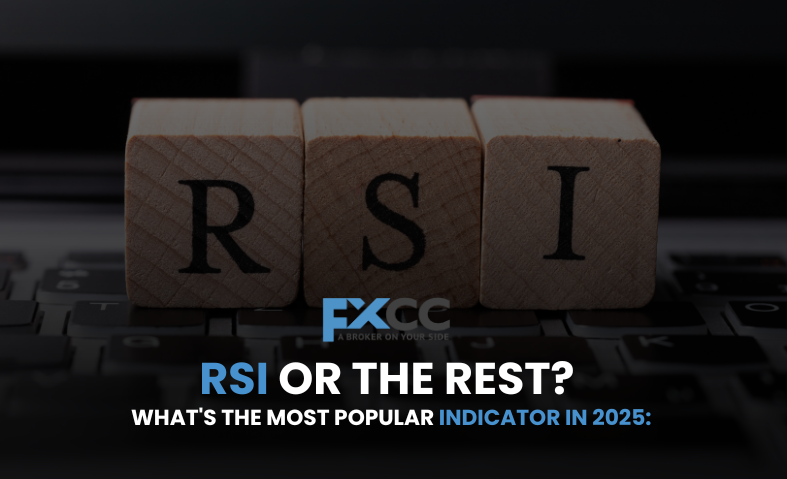Choosing the best tools for trading is like picking a superhero for your squad in a fast-paced world. You wouldn’t send Superman to a water battle, and you shouldn’t employ a trend indicator while the market is going sideways. So, what’s going on in 2025? The Relative Strength Index (RSI) is still a favorite, but is it the best? Or are other signals, like MACD and Bollinger Bands, taking away its thunder? Let’s take a look at what really works in today’s markets.

The Kid Who Came Back Why RSI Is Still the Best
The RSI is a momentum oscillator that notifies you if too many people are buying or selling an asset. It’s a simple premise, and that’s what makes it so powerful. Traders still rely on the RSI for its main signals in 2025:
If the RSI goes above 70, the asset has been bought too much and a price correction could be on the way.
If it goes below 30, it’s too cheap, and you might want to buy it.
But in 2025’s markets, traders are using the RSI in new and interesting ways. They aren’t just looking at the usual 70/30 levels. A lot of people are changing the settings, especially for trading that lasts a short time. For instance, some day traders are utilizing a 9-period RSI with overbought and oversold thresholds set at 75 and 25 to get clearer signals and cut down on market noise. The 50-line is also a critical battleground: if the RSI stays above 50, the bulls are in charge; if it goes below, the bears are winning.
The real wonder of RSI isn’t just how easy it is to use; it’s how well it can find divergence. This is when the price and the RSI go in different directions, which is a sign that a trend is about to change. This one thing makes the RSI an important tool for all traders.
The Main Rivals: A Fight of Legends
RSI is useful for finding momentum, but it’s not the only tool you need. The top traders in 2025 know that one indicator is never enough. You need a group. Here are the best candidates and how they compare to the RSI:
MACD: The Trend Whisperer
The Moving Average Convergence Divergence (MACD) is a momentum indicator that follows trends. The MACD has no boundaries, unlike the RSI, which can only go from 0 to 100. It uses moving averages, which means it usually lags behind the price. This isn’t a flaw, though; it’s a feature. The MACD is great for validating the overall trend and finding changes in momentum.
RSI and MACD: RSI is stronger at spotting overbought and oversold positions and possible reversals in markets that are going sideways. MACD is great at confirming the direction of a trend and displaying how strong it is. What is the best plan? Put them together! A bullish MACD crossover with an RSI that is too low is a strong indicator.
The Volatility King: Bollinger Bands
Bollinger Bands show how volatile something is. There is a middle band (a simple moving average) and two outer bands that get wider or narrower based on how volatile the market is. The main notion is that prices usually stay in these zones.
RSI and Bollinger Bands: While Bollinger Bands measure price range and volatility, RSI measures momentum. They go together perfectly. If the price reaches an upper Bollinger Band and the RSI is in an overbought area, it’s a good sign that the price might change direction. Traders realize that a strong breakthrough is imminent when the bands are tight, which is called a “squeeze.”

Moving Averages (MA): The Grandfather of Trends
For technical analysis, the most important things are simple and exponential moving averages (MAs). They make pricing data look smooth so you can see the trend.
MAs show you the direction of the trend, while RSI shows you how fast the momentum is moving. In 2025, a frequent way to trade is to utilize a moving average to validate the trend and the RSI to decide when to enter. For instance, you might only think about purchasing when the price is above the 50-day MA and the RSI shows that the stock is oversold. This would provide you a solid, confirmed indication.
The Best Playbook for 2025: The Strategy is Synergy
The best trading technique in 2025 won’t be based on just one indication. Using them together is the key. It’s like a tool with several uses. The RSI offers you a quick, accurate indication, the MACD shows you the overall trend, and the Bollinger Bands inform you how volatile the market is.
The ideal way to trade is to use confluence, which means that more than one indicator is giving you the same signal. This makes you feel better about yourself and gives you a better chance. This might be a lethal combo for 2025:
Confirmation of the trend: The MACD is in the positive zone and the price is above a significant moving average.
Check the momentum: The RSI has gone too low and is now starting to go back up.
Uncertainty Confirmation: The price just bounced off the lower Bollinger Band, which could imply that it will go back to its average.
When all of these signals line up, the trade is likely to work out. So, the RSI is a great indication on its own, but in 2025 it will be even better when it works with other indicators. Don’t ask, “What is the best indicator?” Instead, ask yourself, “How can I make these indicators work together for me?” That’s how you win in today’s markets.


